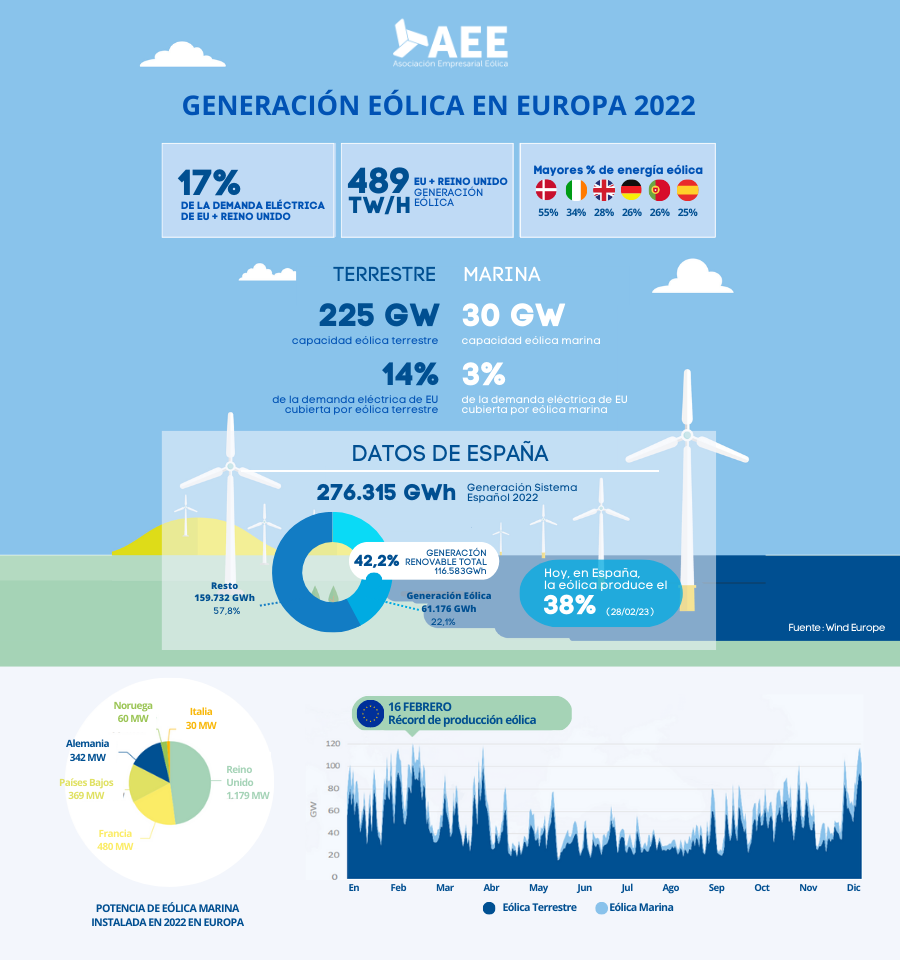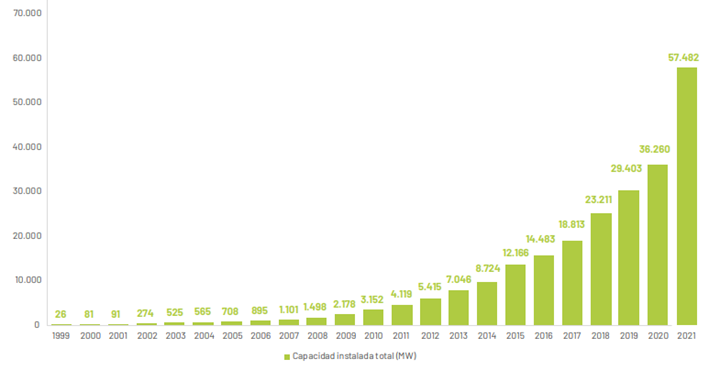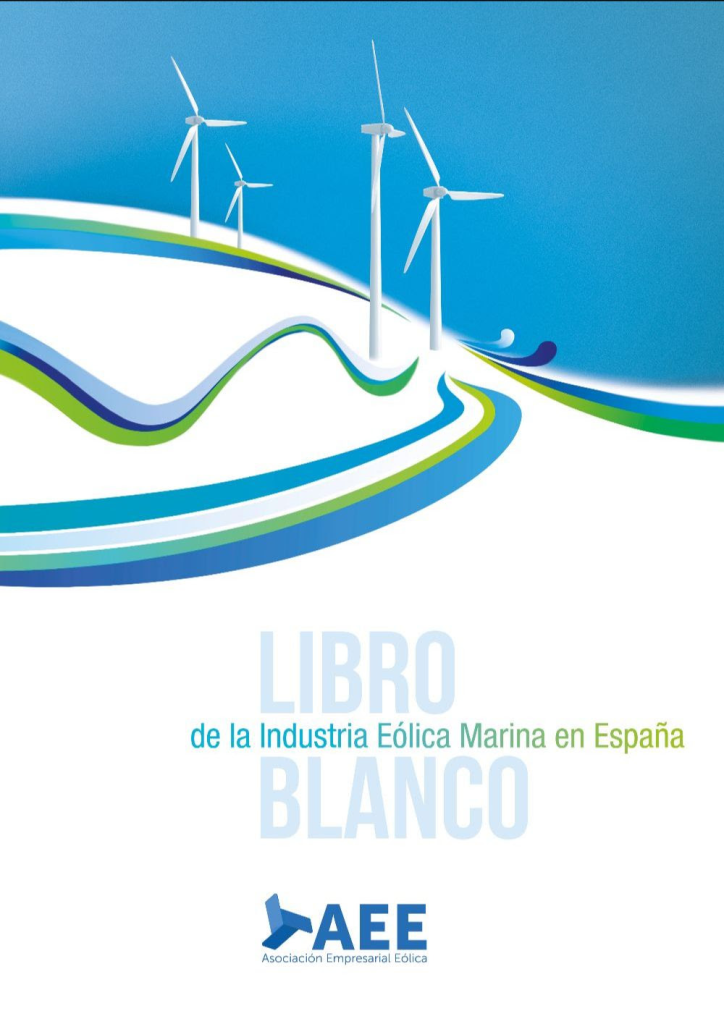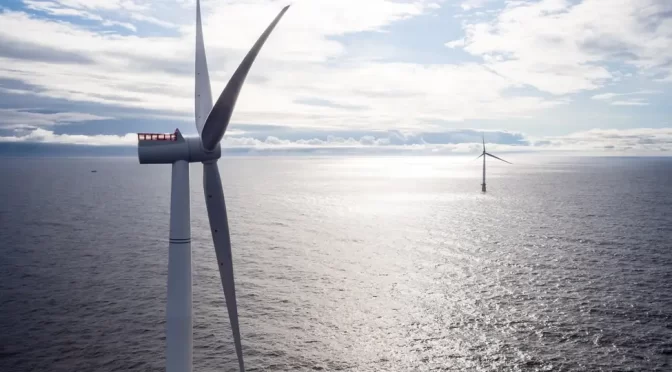The Spanish wind sector celebrates the approval of the Royal Decree that regulates the Maritime Space Management Plans (POEM)
The development of offshore wind power in Spain represents considerable progress in the energy transition and an opportunity for the country and for coastal communities due to the socioeconomic benefits that wind farms will bring with their deployment.
The approval of the Maritime Space Management Plans (POEM) is the starting signal that the wind sector expected for the deployment of floating wind power in Spain. The POEMs define the areas where the different activities of the sea can be carried out. In the case of offshore wind, the necessary delimitation of maritime areas is due to the fact that the areas of the marine space must meet the following requirements:
Have a suitable wind resource to generate enough energy and make the offshore wind farm viable.
Favorable physical characteristics that make the facilities technically and economically viable. Among the parameters to take into account are the emplacement depths, distances to the coast, slope and characteristics of the seabed.
Allow the coexistence of offshore wind power with other uses and activities of the maritime space (biodiversity, defense, fishing, aquaculture, navigation, tourism, etc.).Reaction of the wind sector to the approval of the POEM
The wind sector considers that the approval of the POEM means a necessary and positive step to start the deployment of offshore wind in Spain, at a time when the countries around us already have their plans. It is essential to have knowledge of the areas where it will be possible to install offshore wind farms so that the wind sector can advance with the development of projects and mobilize investments in the short term.
The process of elaboration of the POEM has been long and complex, precisely because of the need to analyze and weigh a multitude of factors related to the different activities that take place in the marine environment and to preserve the natural values of the coast and the sea. For this reason, since the public consultation on the first drafts was held in June 2021, the Administration has applied different changes and cuts to the initially proposed layout.
Some areas initially contemplated for offshore wind have been eliminated, and many others have been cut. In addition, the priority status that the initial drafts gave to offshore wind power has been eliminated, leaving wind farms as areas of high potential. However, and in a first assessment, the wind sector values the result as positive since it identifies sufficient area to carry out the deployment contemplated for 20230 in the Offshore Wind and Sea Energy Roadmap.
The sector has collaborated intensively with all the agents to find the best possible fit, renouncing some areas of high wind potential (more than 20% of the surface contemplated in the Draft that was submitted to public consultation) to guarantee the compatibility of offshore wind power with safety, fishing, tourism and other activities, aware of the Administration’s effort to reach the greatest possible consensus among all the sectors involved.
The coherent ordering of the Ordering Plans is also a fundamental aspect to avoid future conflicts and ensure that the call for future auctions and the subsequent processing of the awarded projects can be carried out efficiently.
In general, the areas that allow a more efficient development of offshore wind projects are those that simultaneously meet the following criteria:
Having a good wind resource (Vaverage > 9m/s), which allows obtaining high capacity factors.
Be located at reasonable depths (P < 200m).
Have a large size (S > 150-200 km2). Due to economies of scale, increasing the size of the projects allows reducing costs.
Stay a short distance from the coast. Although it is not the most determining factor, short distances allow the length of the evacuation line to be reduced and can eliminate the need to install a floating substation. On the contrary, greater distances reduce the visual impact, which facilitates the processing of projects.
Have acceptable accessibility conditions that do not make maintenance operations too expensive. The main accessibility factor is the temporary sea state windows that allow safe access for crew transfer ships.
In addition, it is necessary that there is evacuation capacity available in the vicinity, whether existing, planned (Planning of the Transportation Network 2021-2026) or in nodes classified as Just Transition.
Next steps

to move forward
In order for Spain to take advantage of its position and the technological, economic, social and environmental opportunity that the deployment of offshore wind represents, it must advance in a series of essential areas, at a competitive pace with neighboring countries, among which we can highlight: the regulation for the processing of projects, the design of auctions and their next call, as well as a calendar that provides visibility, as well as coordination in the deployment of the necessary network. In the same way, work must be done to improve social acceptance, both by business sectors and by administrations and institutions, to overcome the social rejection that exists in some geographical areas.

It is necessary to ensure large areas in Spain to allow the development of technology and, efficient from the technical and economic point of view. Based on the POEM and electrical planning and legislation, the regulations must coordinate the authorization procedure, the granting of rights to use the marine space, access and connection to the electrical network, and the promotion of investment through competition procedures. competitive.
INFORMATION OF INTEREST ABOUT OFFSHORE WIND POWER
Offshore wind, a country bet
The Roadmap for the development of Offshore Wind and Energy from the Sea, approved in December 2021, establishes an installed capacity of up to 3 GW of offshore wind power of up to 3 GW as a target by 2030, generating a tractor effect on an industrial sector that already It has a leading position worldwide, but it needs this local market to consolidate its competitiveness in the field of floating offshore wind power. Additionally, the long-term vision of the offshore wind scenario in Spain indicates the potential of our country to reach 17 GW in 2050.
Offshore wind has a high potential to transform the national energy system, contributing to the diversification of renewable energy sources. In addition, its development presents a high potential to contribute positively to industrial development and the Spanish economy. In Spain there is a strong industrial fabric focused on the development of this technology, with a marked export character, coming from the leadership and experience acquired during the more than 20 years of implementation of onshore wind power and synergies with other sectors.
The development of offshore wind ensures Spain’s ambition in terms of R+D+i since, if the installation objectives are met, it will allow our country to further consolidate itself as a reference pole for technological development, R+D +i and testing of offshore wind prototypes and solutions in general and floating wind energy in particular.
Synergies with other industrial sectors and global positioning
Spain has the complete value chain of the offshore wind sector and has the opportunity to become an industrial and technological development hub in this area, especially floating technology. This will make it possible to contribute to achieving the energy and climate objectives established by the country, in turn leading to a positive macroeconomic impact for it, derived from the creation of qualified employment, the increase in exports and the growth of the national GDP.
The development of offshore wind represents a boost from the economic sectors with which it presents synergies, such as shipbuilding and shipyards, the auxiliary maritime industry and port management, civil engineering and consulting, the construction industry, as well as the metal industry, etc. For these industrial sectors, offshore wind has become a very important potential market in their business diversification strategies.
Currently, the bulk of the manufacturing of towers, blades or nacelles for offshore wind farms around the world, due to their large dimensions, are concentrated in coastal areas to facilitate logistics to pre-assembly sites or ports. Spain is positioned as the second country in Europe and tenth in the world in activity in the shipbuilding sector. Likewise, it is positioned as the third country in the European Union in number of shipyards in operation, concentrating most of its activity in Galicia, the Canary Islands, Asturias and the Basque Country. On the other hand, the Spanish state-owned port system integrates an extensive network of ports of general interest and the current fleet that the country has has ships whose activity could be complementary to offshore wind activity.
With the expansion of offshore wind power, the role of national ports and shipyards can evolve, becoming centers for the construction and operation of offshore wind energy facilities for the pre-assembly of floating structures, mooring of installation ships and transport of turbines and other elements of offshore wind farms, as well as for the circular economy in terms of the dismantling of the equipment used, for communication through submarine cables, and for the industry derived from the different actions throughout the value chain of the sector that can be carried out in its surroundings.
Impact on GDP and employment. Boost to the Spanish economy and economic and social vector
Offshore wind energy can give a new impetus to the Spanish economy, helping our country meet its objectives in terms of penetration of renewable energy and reduction of greenhouse gas emissions. On the other hand, it can be a first-rate economic-social vector in certain coastal regions with a long shipping tradition, which are going to be impacted by the energy transition process.
As a consequence of the planned activity and in accordance with a viable scenario, in which most of the activities of the value chain —75%— will be carried out in Spain, it is estimated that during the period 2025-2050 the sectoral contribution of Offshore wind energy would amount to €49,607 M, of which €40,874 M would be the contribution of the agents that carry out activity in the sector (direct impact), and €8,733 M derived from the drag effect that this industry would have on the rest of the Spanish economy (indirect impact).
Additionally, the impact that this industry would have on employment has been estimated if the installed offshore wind capacity targets for 2050 are achieved, according to which the number of equivalent annual jobs for the period 2025-2050 would grow gradually and fluctuate between 7,523 annual jobs during the 2025-2030 period to 17,438 in the 2045-2050 period.
What are the main advantages of offshore wind?
Offshore wind is a renewable energy that uses the potential of offshore wind to generate electricity. Offshore wind technology is undergoing considerable development, advancing to its full technological maturity, so it presents a high potential to help achieve the European and national energy transition objectives.
In addition to the benefits of any renewable energy, the main advantages of offshore wind are the following:
The existing offshore wind resource is superior to that on land, in terms of average speed and regularity, which makes it possible to achieve greater energy use and greater generation capacity.
Offshore wind allows the use of higher power wind turbines, of 10-15 MW and higher, compared to the onshore machines of up to 5-6 MW currently installed.
Floating offshore wind provides a capacity factor higher than other renewable technologies, with values close to 50%26, compared to 24% for onshore wind and 18% for solar photovoltaic, approximately. The development of technology in the coming years will also increase the capacity factor, reaching values comparable to fossil generation technologies.
Offshore wind energy allows to reduce the area needed for energy generation with respect to terrestrial renewable energies.
Offshore wind is essential to meet the decarbonisation objectives and carry out the energy transition in Spain and Europe, by expanding the favorable areas for the implementation of renewable energies and reducing the pressure on onshore sites.
Floating offshore technology involves fewer logistical restrictions than onshore installations and fixed-foundation offshore wind.
The offshore wind regime is more laminar than on land as it has less surface roughness, leading to less turbulence and a low vertical shear factor. This makes it possible to reduce the height of the tower necessary for the same rotor size and machine power, thereby saving material.Spain bets on floating offshore wind power. What are their characteristics?
The main difference between offshore and terrestrial wind power is the support structures. From them, two marine technologies can be distinguished: fixed foundation (bottom fixed) and floating structures (floating offshore). The use of one type of structure or another depends on various factors such as the properties of the seabed and, especially, the depth of the emplacement.
Due to the characteristics of the Spanish coast, the most suitable offshore wind technology to be installed on a large scale in the country is floating. In addition, the development of floating offshore wind power will boost other highly technologically mature industrial sectors in Spain, very relevant for our economy, such as shipyards and shipbuilding, civil engineering, the metal industry, logistics or the construction industry. In floating technology offshore wind farms, the wind turbines are installed on floating platforms anchored to the seabed by catenaries or tensioners. There are numerous floating platform concepts under development, mainly in Europe, the United States and Japan. Within them, Spain occupies a leading position as it is the country with the largest number of technological patents in this field.
The development of floating offshore technology makes it possible to reduce the costs and risks related to the construction, installation, operation and decommissioning of offshore wind farms. Advantages of floating technology compared to fixed foundations:
Increase in the capacity factor that is achieved by having a more intense and more constant wind resource available.
Floating offshore wind is suitable for seabeds where the installation of fixed foundation technology is not feasible.
Floating technology provides ease and flexibility in its deployment, since floating structures can be manufactured and assembled in ports and shipyards to be later towed to their final location.
The floating platform construction process has a positive economic impact for the shipping industry and local coastal communities.
Floating platforms allow access to various industrial capacities, by being able to manufacture both steel and concrete structures, depending on their local availability.
Floating offshore wind power allows greater flexibility for the installation of wind turbines in a way that is compatible with other activities such as fishing, navigation and other uses of the sea.
Situation of offshore wind in the world
The global offshore wind market has grown an average of 22% annually in the last decade, reaching an installed capacity of 57.2 GW by the end of 2021. The year 2021 was an all-time record, with a total of 21.1 GW of new installations connecting to the grid worldwide. In 2021, offshore wind increased by 59% compared to the previous year.
During 2021, China with 16.9 GW of new capacity was the fastest growing country. Europe, which until 2021 was the main offshore wind market in terms of installation volumes, represented the second region in terms of new installations, with 3.3 GW. Most of these offshore wind farms have fixed foundations, but there are already many countries that are beginning to have floating offshore wind farms, such as the United Kingdom (78 MW), Portugal (25 MW) and Norway (3, 6 MW), or that are developing them and will put them into service in the coming years, such as France (113.5 MW) and Norway (88 MW).
Offshore wind energy is mainly concentrated in three countries, which account for 84% of the accumulated installed capacity worldwide. Although the United Kingdom was traditionally the undisputed leader in this technology, in 2021 China installed 16,900 MW, exceeding the installed capacity of any country.
In 2022, in Europe, offshore wind power has grown (latest data from WindEurope) in countries such as the United Kingdom (1,179 MW), France (480 MW), the Netherlands (369 MW) and Germany (342 MW). In total, the offshore wind power installed in Europe is 30 GW, which produces 3% of the electricity consumed on the continent.


